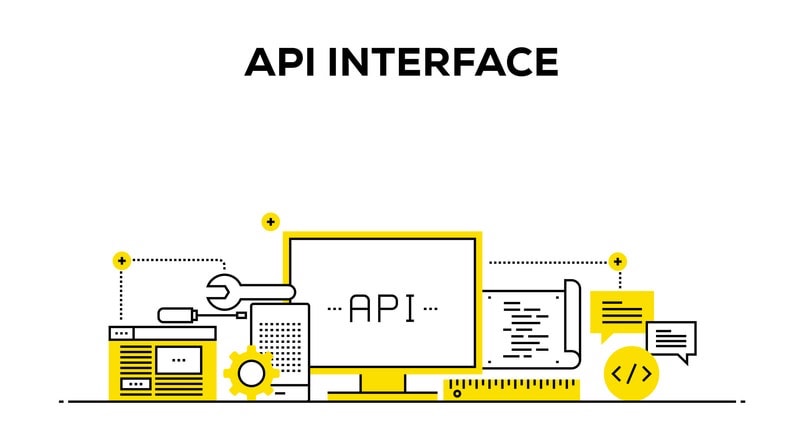Live Video Streaming API: Top Benefits for Enterprise Business
Live streaming in increasingly in-use in the workplace. According to one survey, fifty-five percent of enterprises are now using live video for their company or division-wide broadcasts. Furthermore, fifty-three percent stream or broadcast live video in their organization at least once a week, with 29% using it daily. More and more often, enterprises are doing so with a live video streaming API.
An API, or Application Programming Interface, is a dedicated, simplified programming language. Its purpose is to simplify programmatic interactions with a given software or hardware tool. The use of all types of APIs is exploding. Since 2012, the number of public APIs available to developers has more than tripled. The rate of growth in private and subscriber APIs is similarly meteoric.
If your business doesn’t use APIs to facilitate your technological systems, you are likely to waste time, resources, and money you could have saved. This blog will examine how enterprise businesses are benefiting from using live video streaming APIs in particular.
Benefits of Using a Live Video Streaming API

Most businesses are migrating to API-based workflows for online video. But why is that the case? As this article will show, APIs provide powerful tools for businesses. These tools can be used to streamline operations, save money and time, and build more powerful systems. To demonstrate, let’s look into three of the primary benefits of live video streaming APIs.
1. Build and Deploy a Highly Scalable Live Streaming Solution
Delivering professional, white-label, high-quality online video at scale presents a wide range of technical challenges. Many enterprises have hundreds or thousands of employees, partners, contractors, and customers. Uploading and deploying dozens of videos and multiple live streams every day presents technical challenges.
According to Streaming Media, “The video workflow and distribution environment are incredibly complex, and the way to build a best-of-breed system or even just gain finer control over tasks—especially when delivering video at scale—is by API.”
A live video streaming API allows you to create custom workflows integrated with existing SSO systems, customer and partner interaction platforms, and other technical infrastructures. This eliminates technical bottlenecks in the system, mitigates risk, and allows you to customize video platforms for your hyper-specific use-case.
Simultaneously, this API can deliver all your content via an existing top-tier CDN video platform. This ensures maximum video quality while minimizing buffering and startup failures. Using a professional enterprise video platform with API access and CDN delivery ensures you can scale your streaming from one viewer to millions, seamlessly.
2. Easier and Faster to Launch New Streams, Products, and Services

From an engineering perspective, one of the major challenges in any enterprise is the accumulation of technical debt over time. Using APIs allows you to bypass this issue by minimizing the codebase associated with your live streaming and online video.
An API does this by allowing your developers to use simple HTTP-based API calls to perform complex video operations. In turn, this minimizes the development work associated with any new project. No new tools have to be created from scratch. Instead, you just pug in the right building block.
For example, it’s much faster and easier to launch a new online video portal, web or mobile application with a video API to facilitate the process. Do you need an app that can record and live stream video, or an app dedicated to watching live streams or video on demand? Perhaps you need to manage an ongoing stream from a mobile app. Alternatively, maybe you want to integrate these functionalities into an existing app. Whatever your goals, you can embed API calls within a simple UI framework. From there, you can create highly functional, lightweight apps and services in minimal time.
Streaming solutions with live video streaming APIs also appeal to managers and executives in particular. Why? In short, these development time savings translate directly into monetary savings. With this in mind, it’s no wonder that enterprises are increasingly reliant on live video streaming APIs.
3. Boost Customer and Employee Engagement

Over the past decade, we have seen the rise of live streaming in every area of life. Both professional and personal live streaming is on the rise. However, in a business setting, the most common uses of live streaming are:
- internal meetings
- conference keynotes
- as a product (events)
- marketing, and
- Internal updates or announcements.
Using live video in these ways is a key method for boosting both customer and employee engagement. One great example comes from Apple, which uses live streaming for its headline product and software announcements. These events are akin to rock concerts, with thousands of excited fans competing for limited in-house seating and millions more watching online. The FOMO (Fear of Missing Out) element is very strong with live streaming. For example, that’s why seventy-nine percent of marketers say live video facilitates a more authentic interaction with an audience.
Internally, live video is also uniquely useful. According to VideoBrewery, 59% of senior executives would rather watch a video than read text. Using live video for internal training and communications enables smooth remote-working. As one example, Microsoft estimates that it was able to cut annual costs of $13.9 million by investing in a video training platform. That amounts to an ROI of 569% on their initial investment in the system.
Conclusion
Formerly, an API was more of a luxury for niche development use. Not anymore. Forbes had already predicted in 2014, however, that APIs would soon become a key strategic element for business growth. “APIs represent an attractive source of potential new revenue for companies,” Forbes wrote at the time. “Recent activity suggests companies have just begun to explore potential applications.”
Today, we know that the prediction couldn’t have been more accurate. We hope this article has introduced you to the world of API use in enterprise business settings. If you’re interested in an online video platform, we recommend considering Dacast at this time. We offer a live video streaming API for all premium and enterprise plans. A wide range of businesses have found Dacast suitable for this purpose. Other features include analytics, built-in video monetization tools, SDKs for mobile development, and more.
For those readers not yet streaming with Dacast, are you interested to learn more? If so, you can review our live streaming pricing plans to decide which is the best fit for you. In the meantime, however, you can take advantage of our 14-day free trial (no credit card required). That way, you can test out our streaming platform for yourself. If you’re interested, just click the button below to sign up today!
Of course, we’d love to hear from our audience on this one! Any questions or thoughts? If so, let us know in the comment section below. We’ll respond, and we look forward to the dialogue. Finally, for regular tips on live streaming and exclusive offers, you can also join the Dacast LinkedIn group. That’s also a great place to network with industry professionals.
As always, thanks for reading and good luck with your live streaming.
 Stream
Stream Connect
Connect Manage
Manage Measure
Measure Events
Events Business
Business Organizations
Organizations Entertainment and Media
Entertainment and Media API
API Tools
Tools Learning Center
Learning Center Support
Support Support Articles
Support Articles